EXPLORING THE CHANGING IMPACT


HYDROGEN HAS ON THE GRID


Hydrogen Industry Leaders e-magazine October 2023
EXPLORING THE CHANGING IMPACT HYDROGEN HAS ON THE GRID
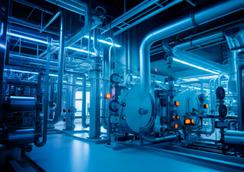
4




WOMEN IN GREEN HYDROGEN: ENSURING INCLUSIVITY IN THE SECTOR
16 20
HOW HYDROGEN COULD HELP DECARBONISE THE NATION’S DEFENCE

8 24
INTERMITTENT USE OR 24/7 PRODUCTION: HOW TO REDUCE LCOH
PODCAST: HYDROGEN’S ROLE IN A CIRCULAR ECONOMY

12 26
HEATING WITH HYDROGEN: COULD WIND POWER HOLD THE ANSWER?

INTERNATIONAL PROJECTS
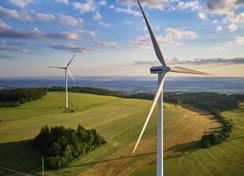
IN THIS ISSUE:
e-magazine 2
HYDROGEN HAS A UNIQUE ROLE IN MANAGING THE GRID AS RENEWABLES CONTINUE TO GROW AND ADD PRESSURE TO THE NETWORK.

As more research goes into reducing hydrogen costs, could an electrolyser use factor of 65% reduce the LCOH compared to 24/7 Production? This issue breaks down the movements in legislation, policy announcements and how to encourage more women into the sector.
Additionally, Hydrogen Industry Leaders brings you the general objectives of the latest insights into the renewables market, how wind power could hold the answer for heating with hydrogen concerns, and the role of hydrogen in decarbonising the armed forces.
Through our international projects section, we explore the core innovations across the globe, including how the Netherlands are making the most of the latest funding rounds, the Chinese projects receiving FID, whether the latest rollout of hydrogen buses in Germany will spark a revolution, and how Italy are investing R&D into desalination.
Our new podcast series will bring new insights into the sector.
Hydrogen Industry Leaders looks at current hydrogen projects, innovations and policies shaping the hydrogen economy that will undoubtedly lead the way for the future of lowcarbon energy.
FOREWORD
Multimedia Editor Floyd March Multimedia Journalist Chelsea Bailey Multimedia Journalist Hannah Wintle Graphic Designer Paul Rose Floyd March f.march@peloton-events.co.uk e-magazine 3
WOMEN IN GREEN HYDROGEN: ENSURING INCLUSIVITY IN THE SECTOR
BY HANNAH WINTLE
As an emerging industry, the hydrogen sector is uniquely positioned to prioritise inclusivity from the start. However, with 2023 statistics courtesy of the Global Hydrogen Council highlighting that women only make up 22% of those employed in the hydrogen sector, it seems there is progress to be made already.
To avoid this becoming an early norm and setting a trend for the future trajectory of the sector, women are coming together through Women in Green Hydrogen (WiGH) to ensure
their voices are heard.
Formed in early 2020 to address gaps in women’s participation in the emerging hydrogen sector, including at conferences and events, WiGH is a fully voluntary organisation, now with over 4,000 members.
“Most of the speakers were men,” Allessia D’Addabbo, Partnerships Co-Lead at WiGH, said of hydrogen conferences at the time leading up to WiGH’s formation.

e-magazine 4
“So then there was an idea to reach out to women and try to create a network of women experts working in the sector, to start to raise awareness about the fact that [hydrogen] is a new source of energy with links to the renewable sector.”
She added: “As we move forward with reconsidering the sector, it’s also important to consider what the role of women is in the energy sphere and how can we progress together. So, that’s the whole idea of how Women in Green Hydrogen came about.”
Lorena Steinle, also a Partnerships Co-Lead at WiGH, added: “Several thousand women are part of the global network, and I think that shows that there are quite a lot of women working in the field. But I think the WiGH network itself gives a safe space for us to exchange knowledge and help each other.”
WIGH LIFTS ITS MEMBERS VOICES THROUGH PARTNERSHIPS AND EVENTS
In partnering with hydrogen event organisers and creating their own events, WiGH are suitably placed to give their members a platform and ensure their voices are heard alongside men.
Their selection process when it comes to partners, Alessia explained, comes with strict criteria that guarantees equal representation of women and men in conferences and events.

Lorena agreed, adding: “regarding visibility, the panels we organise for example, we ensure that the companies commit to a certain number of women on the panels. So we don’t do any panels, for example, with only one woman and six other men.”
In this way, WiGH can ensure a commitment from other companies to empower the voices of their women experts.
Furthermore, the growth of the network over the course of three years from its conception to now, standing at over 4000 strong, makes it attractive to third parties who want to collaborate.
Alessia pointed out that their growing presence is cumulating in more requests for partnership offers, making the network become gradually more well known within the field.
These partnerships further progress the work of WiGH by placing women in areas where their expert insights can be heard, something Lorena said there is “no excuse” not to do.
“You always hear the sentence, ‘no, we can’t find a woman.’ That’s not right. We have a network, and we have a database, and there are women you can invite to speak,” she said.
“I would say that WiGH shows that there are already quite a lot of women working in the field, not enough of course, but there are.”
have expertise as well. I think that is the biggest impact that we have.”
“We give the opportunity for women that come from the sector to get exposure, to get visibility, to show that women in the sector
e-magazine 5
Alessia D’Addabbo
THE WIGH MENTORING PROGRAM AIMS TO SUPPORT YOUNG PROFESSIONALS
WiGH also run a Mentoring Program, designed to support and empower young professionals in the early stages of their careers within the green hydrogen sector.
With over sixty mentors and mentees in over 20 different countries, the reach WiGH has is certainly beneficial in the overarching goal to bolster the presence of women in green hydrogen worldwide.
“The mentorship program is an additional opportunity to connect maybe more senior experts with younger women entering the sector, so that they have guidance and some advice on what is needed to succeed,” Alessia explained.

THE WIGH MENTORING PROGRAM ALLOWS PARTICIPANTS TO:
■ Build new knowledge on green hydrogen strategies, initiatives, and content.
■ Strengthen confidence and develop new skills to promote further development.
■ Strengthen connections and build networks in the field of green hydrogen.
■ Connect on benefits and concerns that are of more relevance to women (e.g., how to proceed in a male-dominated sector, working hours, family planning, etc.).
■ Share ideas, plans, and opinions.
Throughout the one-year mentorship program, mentors and mentees can meet to discuss topics and activities within the field of green hydrogen, and the program ultimately terminates in a networking event to foster key connections throughout the global industry. However, members of WiGH don’t have to join the Mentorship Program to enjoy professional development opportunities.
Alessia said: “We provide opportunities for learning; we have had in the past workshops and training online.
“Also, we work on our networking, connecting the women in the network both online and physically when we have the opportunity to have physical gatherings. What we focus on is to, on both sides, increase visibility and connect people globally.”
e-magazine 6
WOMEN IN STAKEHOLDER POSITIONS WILL ENHANCE VISIBILITY ACROSS THE SECTOR
Being a relatively new industry that is suddenly, and rapidly, gaining traction, the hydrogen sector has a unique opportunity to ensure the inclusivity of women from a much earlier point than the energy sector generally has in the past.
Through their partnerships, WiGH enables their experts to speak at hydrogen events, something often unavailable to women due to the vast majority of stakeholder positions being filled by men.
Oftentimes, this is the case because men have migrated from their already well-established positions in the oil and gas industries, due to similar skills being required within the hydrogen sector.
As such, there is a risk that women, who don’t have an equal footing in the energy sector, may miss out on achieving these stakeholder positions.

By uplifting the voices of their members and bringing visibility to women within the sector, WiGH are highlighting the opportunity to complement existing skills that have been longestablished in the energy sector, with a fresh outlook based on gender equality.
“Several thousand women are part of the global network, and I think that shows that there are quite a lot of women working in the field.”
Lorena Steinle, WiGH
As we see other industries introduce gender inclusivity schemes to retroactively address the inequalities that have been allowed to develop over decades, the green hydrogen sector could avoid this altogether if the right steps are taken sooner.
WiGH exists to ensure these steps are indeed taken, and to use this unique opportunity of an emerging industry, to safeguard against a trend of women in STEM being sidelined.
e-magazine 7
INTERMITTENT USE OR 24/7 PRODUCTION: HOW TO REDUCE LCOH
BY FLOYD MARCH
The majority of people working in the hydrogen sector are focusing on building production capacity to generate hydrogen on a 24/7 basis. Taking a different approach, a new scientific study by Stanford University has suggested that only producing hydrogen when wind and solar are available and in excess could be a new tactic to take.

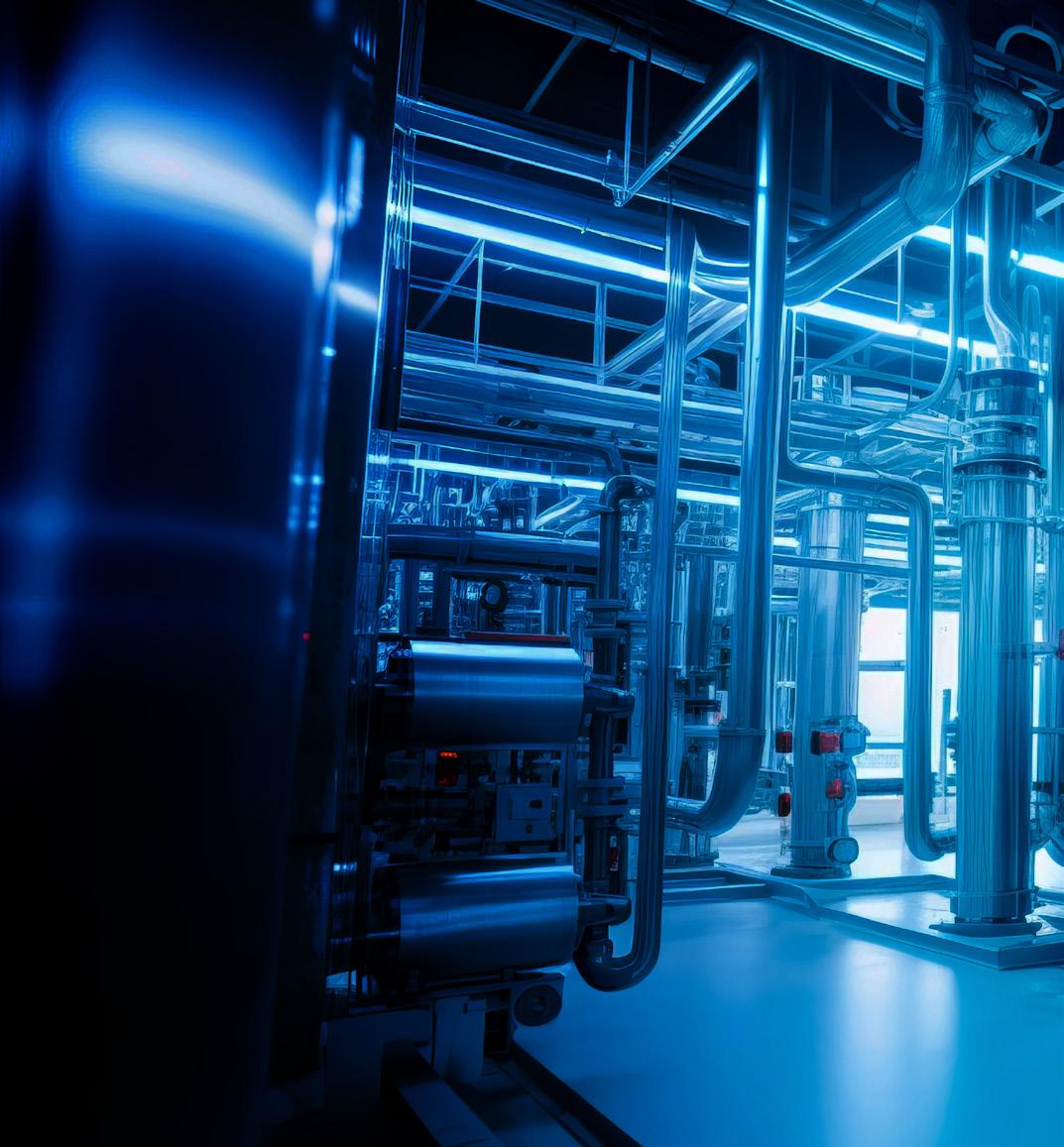
Cost savings, According to Professor Mark Z Jacobson who led the research, would come from lower capital costs for renewables, storage, and longer lifespan of hydrogen equipment, which could offset the higher initial CAPEX of the 24/7 approach.
Naturally, this goes against the grain of the widely accepted discourse that electrolysers will have to operate as close to 24/7 as possible to be economically viable and have the lowest overall costs. This research paper aims to change this idea and look at alternative options.
e-magazine 8
USE FACTOR BETWEEN 20-65 COULD BE CHEAPER THAN 24/7 PRODUCTION
Looking ahead to 2035, the report highlighted that, in theory, the lowest-cost renewable hydrogen will be created with an annual optimum electrolyser use factor of between 20 and 65%.
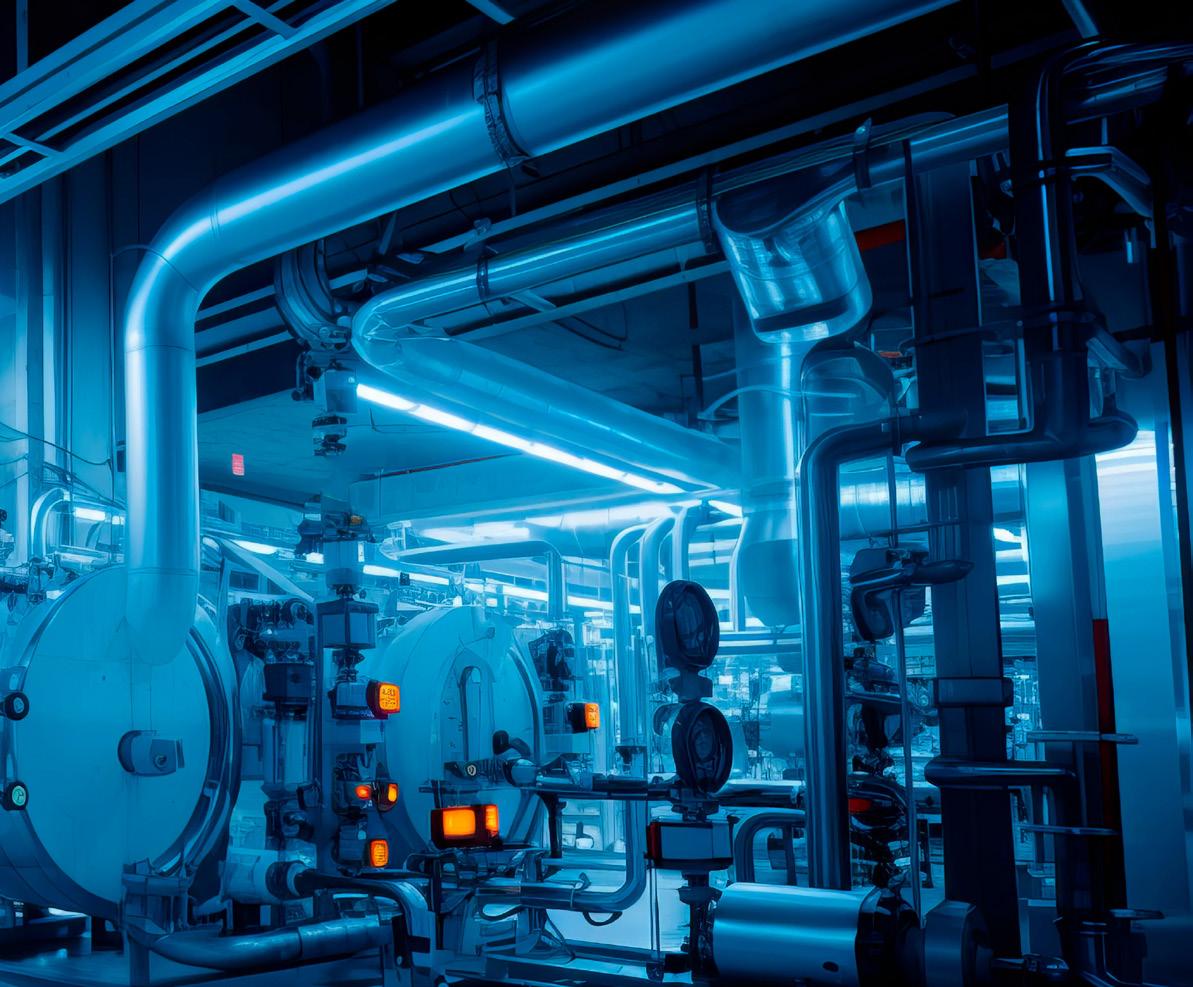
There are some assumptions made within these calculations, including the presumption that all electricity used will be from 100% renewables. Additionally, the wide scope range will naturally close slightly as more research is conducted and more electrolysers are built and operated under this model.
Authors of the Smart Energy Journal disclaimed how from a business view: “Rectifiers [to convert AC to DC electricity], electrolysers, and compressors should be operated full time, with a use factor of unity, to minimise cost.”
However, they argue that looking at a whole project lifetime and high wind, solar, water and hydrogen penetrations, using sub-unity factors (20-65%) reduces the overall cost of green hydrogen production.
Explaining why this is the case, the report went on to state: “Fortunately, the impact of higher capital costs on overall hydrogen cost is largely offset by the longer lifetimes of rectifiers, electrolysers, and compressors with lower use factors.”
e-magazine 9
COULD THE LEVELS OF PRODUCTION REQUIRED MEET INCREASING DEMAND?
Many critics of the report cite the fact that the sector is struggling to match the capacity requirements when developing with 24/7 in mind and that there would need to be a drastic upscaling of electrolysers and compressors to meet the requirements of intermittent production.
The report picked up on this, and explained: “The nameplate capacities of rectifiers, electrolysers, and compressors must be increased to ensure the same annual quantity of hydrogen is produced as with a unity use factor” and that “higher nameplate capacities mean higher capital costs.”
Balancing the early CAPEX against the increased life span of electrolysers and compressors through less use is one that will be puzzling for the sector until companies make decisive action one way or the other.
However, the report argues that the cost of buying the equipment can be amortised over a longer period of time, and reduce the overall LCOH of green hydrogen. Additionally, producing more electrolysers and rectifiers could lead to more innovation in the technology.
R&D AT THE HEART OF EITHER PRODUCTION METHOD
Implications of this will then be felt across the 24/7 production landscape and the sub-unity factor of 20-65% landscape. The ways in which LCOH has also been of huge debate recently, as previously reported by Hydrogen Industry Leaders, so increased R&D and installation could help reduce this too.
The paper suggests that by minimising the operational duration of H2 equipment, the demand for solar panels and/or wind turbines could be decreased, resulting in reduced requirements for hydrogen storage, and eliminating the need for battery storage to maintain equipment functionality during periods without wind or sunlight.
“Additional cost is offset because, either a lower nameplate capacity of wind and solar or less hydrogen storage is needed with a lower use factor,” it explains.
“In sum, the lowest cost of hydrogen production integrated with 100% WWS occurs at a hydrogen-equipment use factor below unity, between 0.2 and 0.65 in the test cases provided.”
“As such, it is more cost-effective from an overall system perspective to produce hydrogen intermittently rather than continuously. The results here are subject to model uncertainties, but [the] conclusion appears robust.”

e-magazine 10
The study concluded that using dedicated renewables projects solely for hydrogen production means that wind, water or solar power generators “cannot be called upon to provide grid electricity, heat, or cold in a time of high electricity, heat, or cold demand or low overall WWS supply, increasing the need for electricity and heat storage”.
“Economies of scale suggest that interconnecting all WWS generators and adding loads (such as green hydrogen production) that can absorb excess electricity, results in the most cost-effective system.
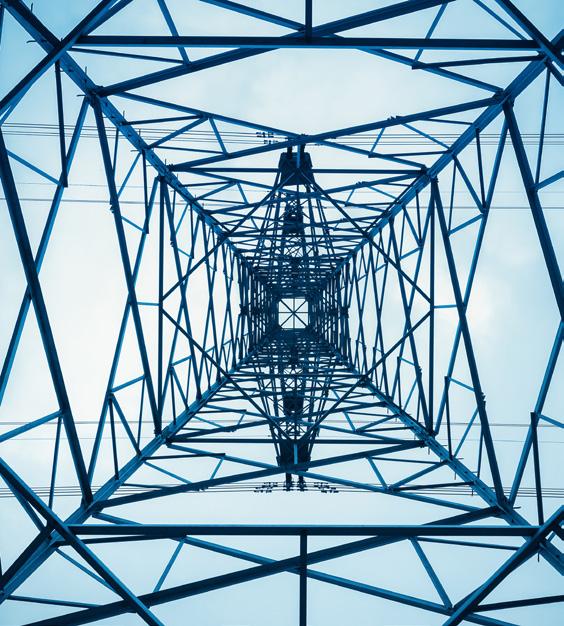

As well as landscaping the different options for electrolyser implementation the research focused on the quantities of hydrogen required to meet the 2050 worldwide demand. It split the focus into three different areas: steel, ammonia and transport (including aviation and shipping.)
As previously reported, the projected annual requirements for these sectors were 78.7 million tonnes, 31.7 million tonnes, and 91.2 million tonnes, respectively. The report highlighted that this would require a demand of over 7000 GW produced by renewable power (including hydrogen) and over 6000 GW of electrolysers.
“Despite the challenges of implementing green hydrogen for long-distance aircraft and ships, it is important to evaluate this solution because no other clean, renewable energy solution is on the horizon”
Whether using excess renewable energy when available, our operating 24/7 electrolysers and compressors are the answer to meeting demand, the supply chain will ultimately decide. As with most things, a balance between the two will likely be met, but there will undoubtedly be improvements in efficiency, life span and environmental impacts.
“Grid operators should incorporate intermittent green hydrogen production in grid planning.”
e-magazine 11
HEATING WITH HYDROGEN: COULD WIND POWER HOLD THE ANSWER?
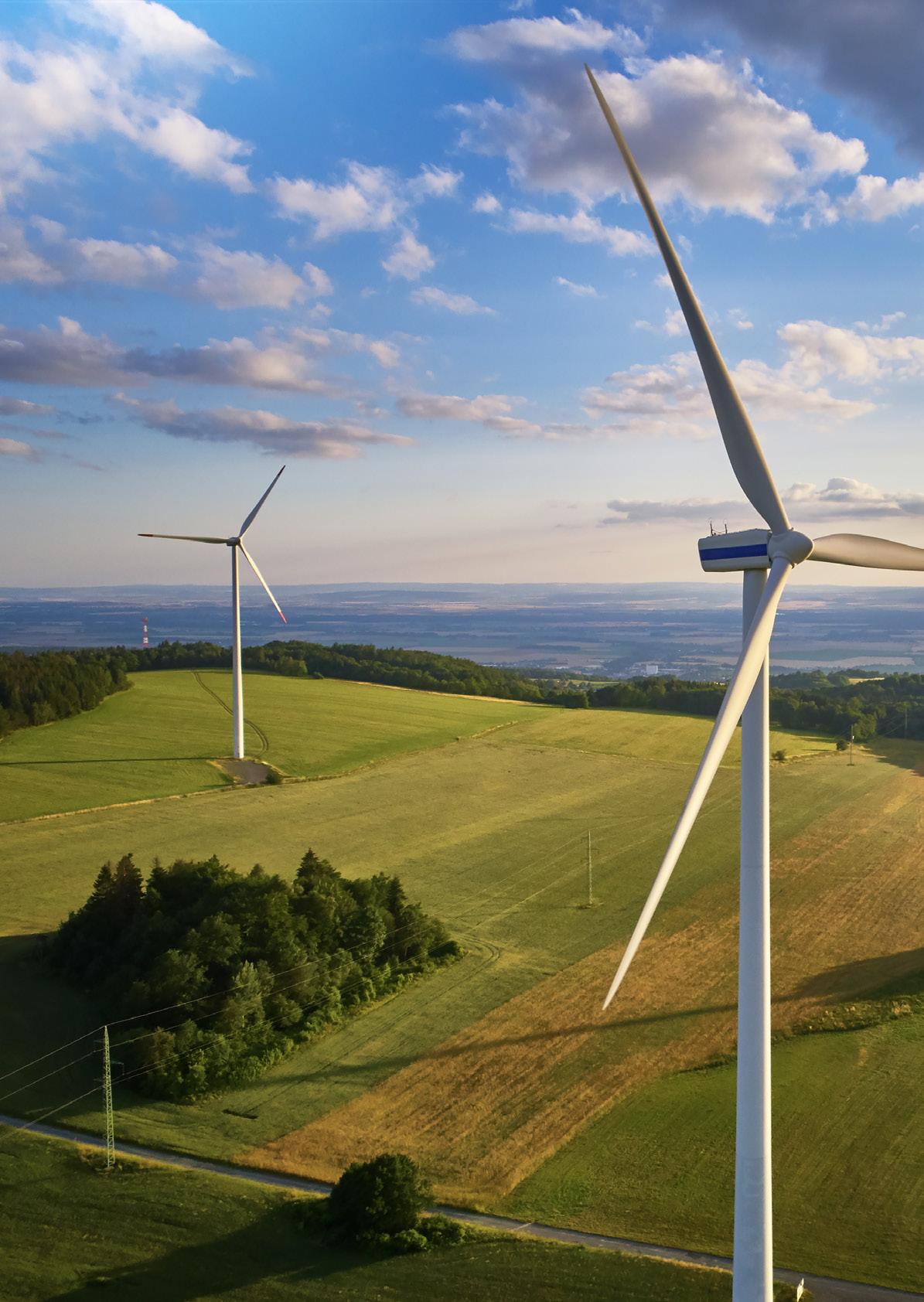 BY HANNAH WINTLE
BY HANNAH WINTLE
e-magazine 12
According to a recent report by Cadent, a calculated 40 GW of offshore wind capacity could supply the UK with enough green hydrogen for domestic heating by 2050. Hydrogen Industry Leaders explores how the gas company arrived at this figure, and to what extent it hopes to influence government policy going forward.
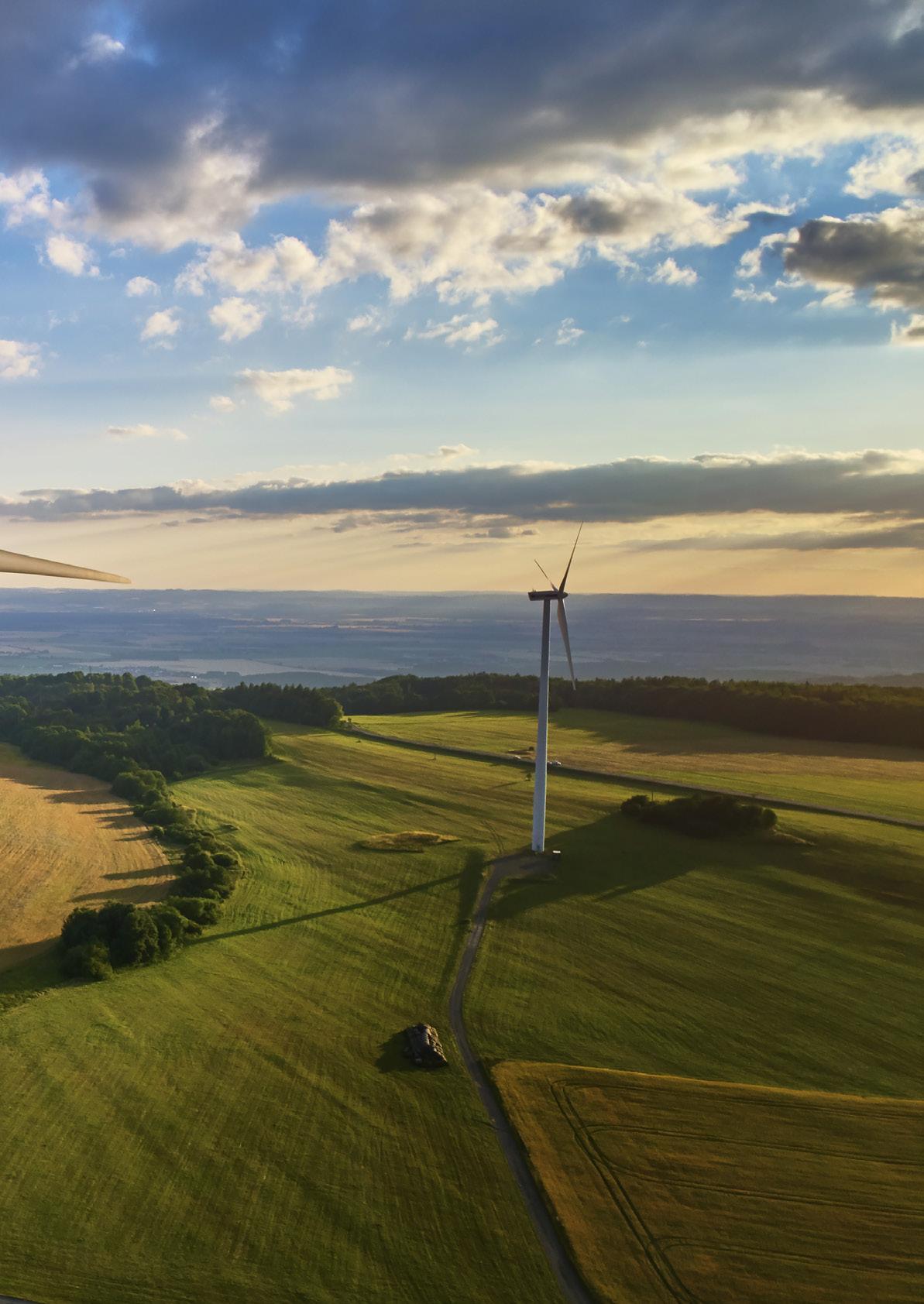
Earlier this year, former Energy Minister Grant Shapps indicated that aspirations to replace gas boilers with hydrogen alternatives would be abandoned, acknowledging that while hydrogen will certainly form part of the nation’s energy mix, it is unlikely we’ll see it used for domestic heating.
Furthermore, following a Sky News investigation this month, several companies have removed potentially misleading statements from their marketing campaigns which allude to the use of hydrogen in their boilers.
As the UK awaits 2026, which is when the government have said they will make a decision on the potential use of hydrogen in domestic properties, the general public are left to speculate about whether the gas will or will not be one day warming their homes.
Cadent, the UK’s largest gas distribution network, seem to think that for some of us, hydrogen-powered heating could be a viable solution, having calculated that 40 GW of offshore wind capacity is what it would take to get us there.
e-magazine 13
HYDROGEN HEATING WON’T BE FOR EVERYONE
While their conclusion states that ‘there could be enough wind capacity to decarbonise domestic heating using hydrogen’, the gas company acknowledge the role of other alternative technologies available for decarbonising heating.
An initial calculation of 80 GW of wind capacity assumes that every home currently connected to the gas network would make the switch to hydrogen by 2050.
If this were indeed to be the case, 80 GW would be sufficient if each home consumed the same amount of energy in 2050 as they do today, though in theory, with better insulated homes, energy consumption would be less.
However, with the current surge towards installing heat pumps, as observed through government incentives such as the Boiler Upgrade Scheme, a grant awarding £5,000 towards air source heat pumps, and £6,000 towards ground source heat pumps, it’s easy to envisage a future where heat pumps are widespread.
Should half of the homes that are today connected to the gas network make the switch to heat pumps rather than come to rely on hydrogen for their heating, this reduces the requirement of 80 GW to 40 GW.

DEBUNKING FINDINGS OF THE PAST
Through their comprehensive and detailed analysis, Cadent take into account storage capacity, boiler efficiency, and incurred losses throughout the supply chain.
It is these contextual details, the report claims, that set them apart from the Hydrogen Science Coalition’s (HSC) 2022 assessment, which suggests that 385 GW of wind would be needed to produce enough green hydrogen for domestic heating.
Their analysis, Cadent claim, doesn’t recognise the role that other low-carbon heating technologies will play in the mission to decarbonise domestic heating, and so is set upon the assumption that hydrogen heating will be a universal norm throughout the UK.
Moreover, the HSC fails to adjust gas supplied to obtain heat demand, meaning they start with an inflated demand number. The analysis also assumes a lower level of efficiency in transmitting electricity output into heat demand, assessed as 47% compared to Cadent’s calculation of 66%.
The HSC also use a much lower load factor of wind farms in their calculations. The figure they use, 39%, is based on the historical average load, whereas Cadent’s figure of 60% is based on the governments expectation that wind farms will run between 57% and 63% between 2030 and 2040 due to larger turbines.
‘In their analysis published in 2022 the HSC assess the efficiency of hydrogen conversions as we have done here, but with differing and often outdated or poorly evidenced assumptions.’
e-magazine 14
‘A pragmatic assumption would be to assume that half of the homes currently connected to the gas network are converted to hydrogen.’
POLICY DECISIONS SHOULD BE INFORMED BY THE LATEST RESEARCH
Given the vast differences between Cadent’s findings and those of the HSC, it remains paramount that any policy decisions are made based on the latest facts, and that the statistics presented are well evidenced and trustworthy.
To that end, Dr Angie Needle, Director of Strategy at Cadent, said: “Having a good grasp of the technical issues on decarbonisation is vitally important to help policy makers make properly informed, evidence-based policy decisions.
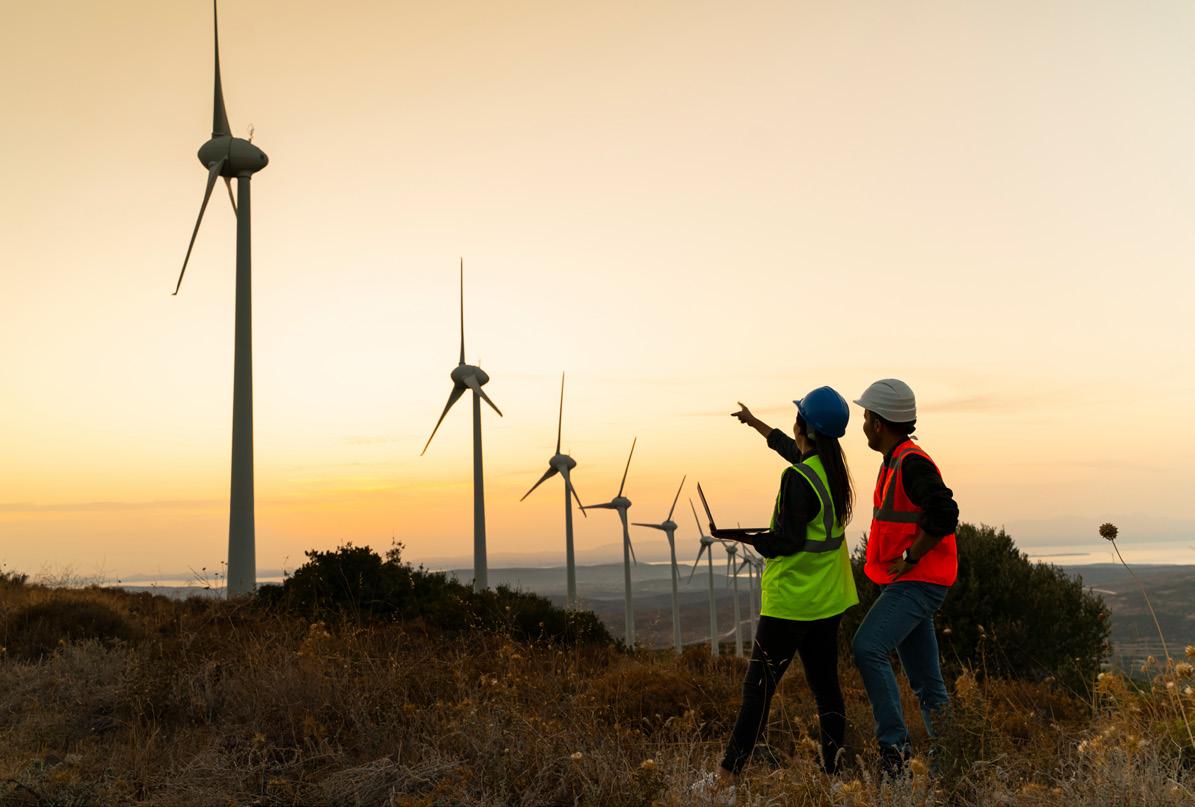
This paper takes a fresh and rigorous look at how much wind capacity could be needed to make green hydrogen for heating, an area where previous reports have produced numbers that could lead to policy makers drawing incorrect conclusions on the viability of hydrogen for domestic heating.”
Despite the analysis that preceded this report, Cadent have evidenced that hydrogen is not only a plausible solution for domestic heating, it is more achievable than previously understood.
Now, it leaves the government in a position to assess a more contemporary analysis based on current and predictive statistics and contexts, with the hopes that these will be considered when developing the UK’s wider hydrogen strategy, and specifically, what this will look like when it comes to its domestic application.
e-magazine 15
EXPLORING THE CHANGING IMPACT HYDROGEN HAS ON THE GRID
BY FLOYD MARCH
With the wide scale rollout of renewables projected over the next 20 years, there has been plenty of debate surrounding the impact this will have on the grid, how to manage demand, and how to develop the grid to be fit for the future.
Hydrogen is not exempt to this national debate, with the European Commission setting out their stance through a recent report named: “Hydrogen’s impact on grids Impact of hydrogen integration on power grids and energy systems.”
Three core themes involved within the report included the fact that: “Hydrogen is complementary to electrification for decarbonisation targets and a promising means for deeper and faster decarbonisation in harder-to-abate electrical final uses.”
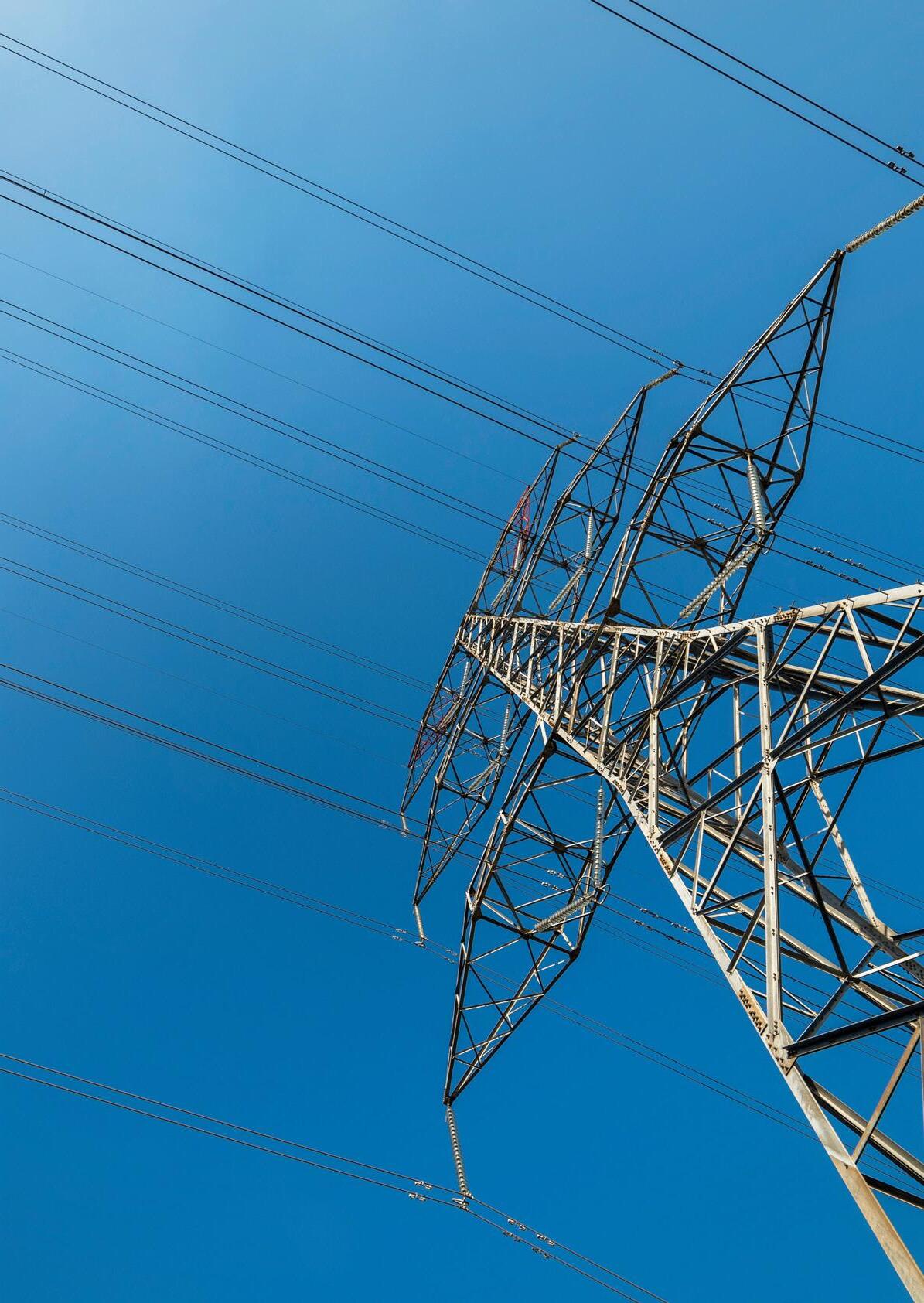
e-magazine 16
GREEN HYDROGEN REQUIRES AN AD-HOC SCHEME ACCORDING TO THE EC
Additionally, it was debated that the development of green hydrogen requires an ad-hoc scheme, valid across jurisdictions, including:
■ Additionality principle, to avoid double counting and greenwashing;
■ Geographical correlation – for ensuring the utilised RES are not impaired by grid congestions;
■ Time correlation – for ensuring that utilised RES are not impaired by grid congestions, which occur and are assessed at power market granularity - 1h / 15 minutes.
There was also an acknowledgment that Hydrogen system can provide flexibility to the grid, improve adequacy and resilience to the power system, through:
■ Short duration flexibility: grid services as demand response and balancing from electrolysers;
■ Long-duration flexibility: storage of excess RES in large existing gas reservoirs for subsequent use as hydrogen;
■ Adequacy: using stored hydrogen for power generation in periods of prolonged norenewable generation;
■ Resilience: adding a new pillar for energy resources optimisation and infrastructure utilisation.
The report highlighted: “Particularly relevant impacts that an increased level of hydrogen demand and generation will have in the electricity grid will occur in terms of (i) volume of additional load in the system, (ii) location of that additional load, (iii) flow of energy in the grid (connection points), (iv) additional source of services to the electricity system, (v) potential additional RES generation for the production of (green) hydrogen.”
Hydrogen has a crucial role in mitigating growing changes to the grid

In particular, grid-connected electrolysers shall have the following impacts. When considering connection issues, location, capacity, grid reinforcements; coordinated grid planning within H2Valleys additional electric loads need to be managed (for the quota of power not generated on site), with consumption profile depending on the use case.
Author’s of the report stipulated: “Dynamic characteristics, interacting with the wider electric system, to be modelled and included in stability simulations, control & protection schemes; possibility to provide ancillary services: frequency and voltage support, demand response, flexibility provider, to be utilised by the Grid Operator according to the efficiency and cost-effectiveness compared to other flexibility means/services.”
e-magazine 17
GRID PLANNING NEEDS TO BE RETHOUGHT AND CONSIDERED WITH A FUTURE PROOF MINDSET
The grid planning and system development activities, which shall for sure remain entrusted (or at least coentrusted) on grid operators, will have to address increased challenges. The “Hydrogen and decarbonised gas markets package”, December 2021, foster integrated network planning between electricity, gas and hydrogen networks.
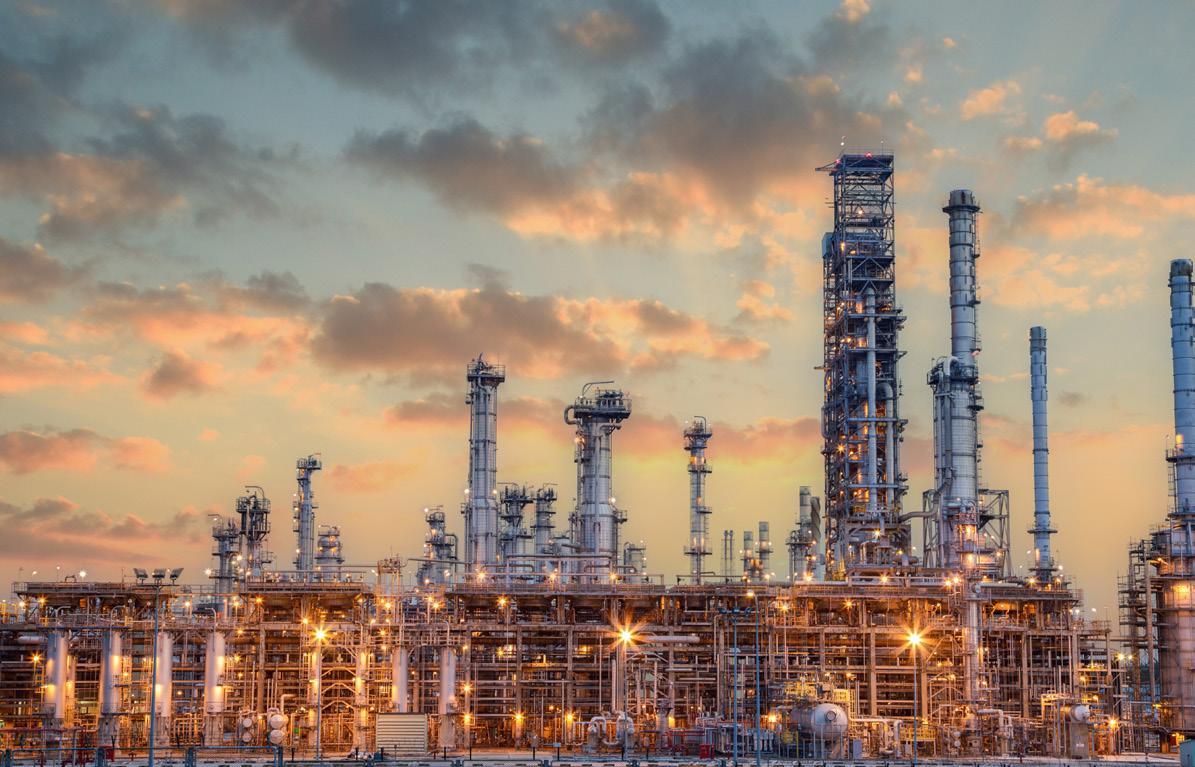
Indeed, in the planning stage the complexity of a sector-integrated system is multiplied by the large uncertainty of most of its fundamental variables: RES capacity development and its intermittent generation pattern, load development between contrasting energy efficiency actions and electrification of other sectors, P2H and – more broadly - P2X projects, impact on natural gas system, etc.).
The report continued: “In particular, P2H represent one of the most impacting trend, due to its size and to the correspondent impact on natural gas system (H2 might substitute a quota or even all the natural gas flowing in today’s pipes and users’ devices).
“This requires on one side the updating of scenario building framework, on the other side an important advancement in methodologies, modelling tools, simulation schemes for traditional grid planning, for adequacy resource assessment, and for resilience analysis.
Hydrogen’s impact on grids included in the perimeter of energy projects to be assessed and how: external input to be forecasted or system resource to be planned in coordination with power & gas grids projects.”
e-magazine 18
The main concepts to best integrate the upcoming set of large electrolysers into the evolving energy system can be summarised as follows:
Location, logistic configuration and operational mode of new electrolysers are strategic system architecture questions; therefore appropriate coordination between hydrogen projects and electricity/ gas developments is needed to ensure compatibility and optimality at energy system level.
Regarding electricity grids, ENTSO-E has already developed some methodologies, like MULTISECTORAL PLANNING & DUAL ASSESSMENT of projects within its framework planning process TYNDP; more methodologies and application mechanisms need to be developed together with stakeholders and approved by relevant authorities.
Impact on electric grid will be an order of magnitude higher than on gas grid; therefore it is paramount to include electrolysers and other components of hydrogen production in planning process of power system, rather than only tackling them as a connection request.
The viability of the business case as well as the impact on electricity grids, is case- and country dependent; no “one size fits all” conclusions can be applied. Each project must be analysed within its entire framework, boundary conditions and externalities, as well as potential flexibility provision.
Non-electrolysers hydrogen, as well as imported hydrogen, shall reduce the forecasts of domestic electricity demand. 3.2.2 Grid operations and flexibility services provision Electrolysers, but more correctly P2H2 projects (end-to-end approach).
While the report covered even more considerations for the integration of renewables, and specifically hydrogen onto the grid, the main talking points discussed above will hopefully help drive more innovation within the sector.
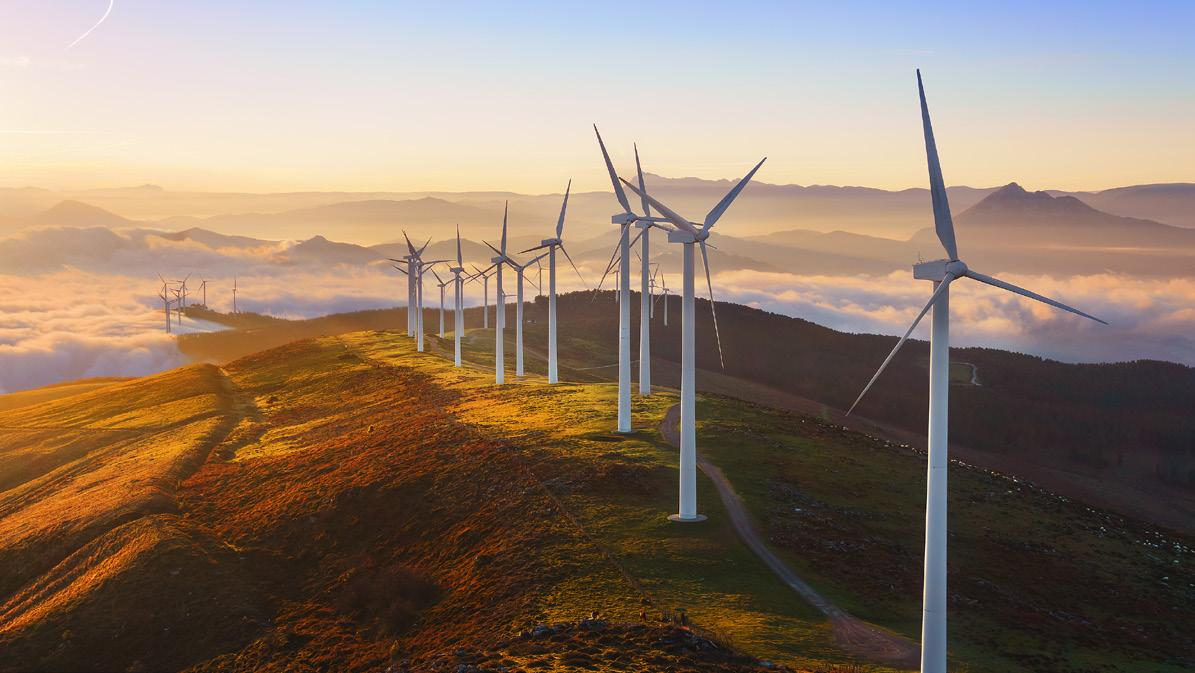
e-magazine 19
HOW HYDROGEN COULD HELP DECARBONISE THE NATION’S DEFENCE
 BY HANNAH WINTLE
BY HANNAH WINTLE
As the UK explores hydrogen as a key player when it comes to the energy transition, various sectors and institutions are discovering how it can work for their operations, too. After the Defence Support Organisation launched the first of three hydrogen-fuelled charging facilities at RAF Leeming in August, Hydrogen Industry Leaders spoke to Fg Off Tom Peters to ascertain to what extent the gas will play a role in the Ministry of Defence’s decarbonisation strategy.
e-magazine 20
In 2021, the Ministry of Defence (MOD) published their Climate Change and Sustainability Strategic Approach, which set out a target to reduce its emissions and increase sustainability activity in order to contribute toward the wider UK goal of reaching net zero by 2050.
Earlier this year, the MOD also announced their ambition to see 100% of its non-operation car and van fleet be zero-emission by the end of 2027.
Speaking of the RAF’s goal of net zero by 2040, Fg Off Tom Peters, Officer Commanding Mechanical Transport, Fuels and Lubricants, said: “The RAF has a social and environmental responsibility to drive down it’s carbon emissions and reduce its impact on the environment, while maintaining the same high standards of operational effectiveness.
“Reducing dependence on fossil fuels, while cutting out net carbon emissions to zero by 2040 is at the heart of our planning for the next two decades.”
Within these wider climate targets, the Royal Air Force (RAF) have outlined their individual mission to achieve net zero by 2040.
RAF LEEMING ARE THE FIRST TO TRAIL HYDROGEN-FUELLED CHARGING FACILITIES
Situated in North Yorkshire, RAF Leeming trains, delivers, and supports UK and overseas Expeditionary Air Operations, Fg Off Peters explained.
“The Station is home to a range of squadrons and lodger units with broad expertise. As it’s in close proximity to training areas at Spadeadam, Otterburn and Catterick, RAF Leeming is the preferred site for deployed exercises and detachments from UK and overseas units,” he said.
In August this year, RAF Leeming became the first of three bases to install hydrogen power units (HPUs), with the Navy’s HMNB DEVONPORT and the Army’s Merville Barracks in Colchester to follow.
Trialling the use of hydrogen directly correlates to the RAF’s net zero goals, as well as being an important step in the transition to a zeroemissions fleet, while deepening Defence’s understanding of how hydrogen might contribute to their future energy mix.
To meet this target, which was also set in 2021, the RAF have set out a strategy of initiatives including introducing sustainable aviation fuels (SAFs), developing electric aircraft, and upgrading equipment with hydrogen or electric alternatives.

The trial is being delivered in support of the Sustainable Road Transport programme, and focusses on hydrogen as a source of fuel, presenting one option for the MOD when it comes to managing electric vehicles in the future.
Fg Off Peters said: “Along with other sustainable fuel sources on trial within the MOD, hydrogen power units offer a different renewable fuel source option to continue to deliver our output in a sustainable manner.
“With the ability to transport and upscale the hydrogen power units where required, they offer the flexibility that supports the RAF in its ongoing Operations across the UK.”
The Defence Support Organisation are working in partnership with the Defence Infrastructure Organisation to ensure the energy infrastructure needed by Defence meets its requirements.
The energy, charging, and payment infrastructure at the facility is all provided by renewable energy specialists GeoPura.
“The Royal Air Force [are] working closely with Government and Industry partners to deliver sustainable change.”
Fg Off Tom Peters, RAF Leeming
e-magazine 21
RAF LEEMING HAVE PREVIOUSLY TRIALLED HYDROGEN IN THEIR OPERATIONS
In July last year, RAF Leeming and the Department of Transport successfully won a contract for Project ZeHyDA – Zero emission Hydrogen Demonstration for Airport applications.
The project aimed to demonstrate the utility of a hydrogen powered vehicle working on the air-side of a station or airport, and was a collaboration between RAF Leeming and the University of Newcastle.
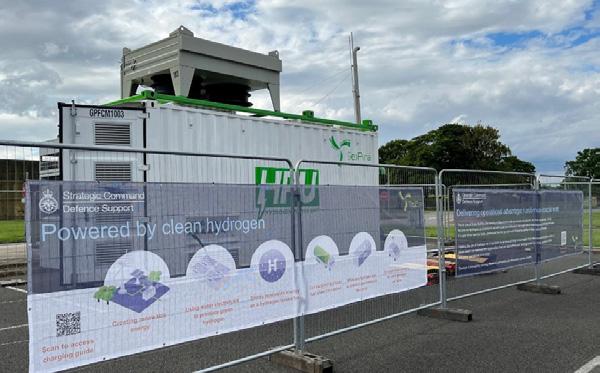
Through the project, which aimed to demonstrate the potential use of hydrogen in the RAF, project leaders designed, converted, and trialled the first hydrogen powered Medium Aircraft Towing Tractor.
THE MOD ARE KEEN TO EXPLORE THE POTENTIAL USES OF HYDROGEN GOING FORWARD
The Defence Support Organisation are open to exploring how hydrogen may be used in the future, such as fully hydrogen-powered vehicles.
Fg Off Peters also commented on Defence’s ambition to investigate hydrogen energy further: “Alongside our Industry Partner, GeoPura, the MOD is looking to expand the use of hydrogen across it’s domain; most notably with the British Army and Royal Navy looking to host hydrogen power units within some of their establishments.
“The hydrogen power units can also be utilised as a heating and hot water provider, showcasing its capability in operationally austere environments to provide basic amenities in lieu of infrastructure.
Trialling the use of hydrogen directly correlates to the RAF’s net zero goals, as well as being an important step in the transition to a zeroemissions fleet, while deepening Defence’s understanding of how hydrogen might contribute to their future energy mix
At the time, Group Captain Maurice Dixon, RAF Leeming, said that the project would play a key part in the wider RAF net zero strategy and programme of activities, and that any recommendations and lessons learned would be shared within the wider MOD.
“Hydrogen technology is still a relatively new asset within the MOD, therefore the live applications are limited at the moment, however the aspiration to innovate with this fuel source is significant.
As the use of hydrogen is still a new prospect within the MOD, its applications are still being discovered. As such, there are no plans at present for hydrogen-fuelled aircraft, though Fg Off Peters did point out their ventures into other SAFs, including the RAF’s world-first sustainable fuel military transporter flight which was completed in 2022.
Ultimately, as is the case for many industries and institutions, hydrogen remains a new and exciting prospect which promises to help in decarbonisation efforts, but it is one that requires further innovation to properly see its potential achieved.
RAF Leeming’s new hydrogen power units demonstrate that not only is that much needed innovation currently underway, but that hydrogen is being seriously considered to play an ever more important role in the energy mix of the nation’s defence going forwards.
Via gov.uk
e-magazine 22
Moving the world towards zero emissions
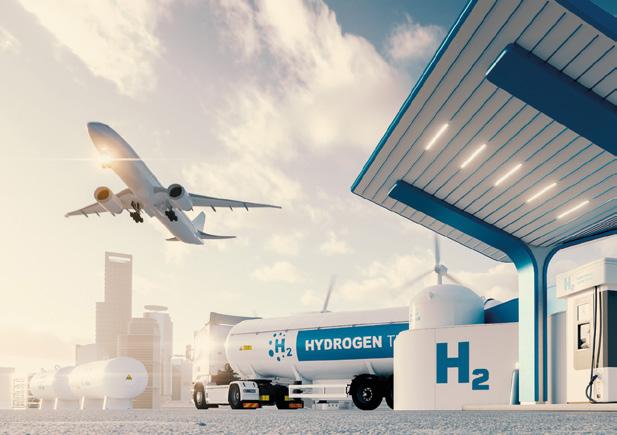
Our 11,500 sqm state-of-the-art research & innovation centre at the Bristol & Bath Science Park delivers a wide range of expertise to facilitate multidisciplinary collaboration across all propulsion types and transport sectors, accelerating the pace of innovation in future mobility. Established as a secure environment for testing, research and validation, IAAPS offers unrivalled expertise and innovation capabilities to safely develop new hydrogen fuel technologies from fundamental research to new product introduction.
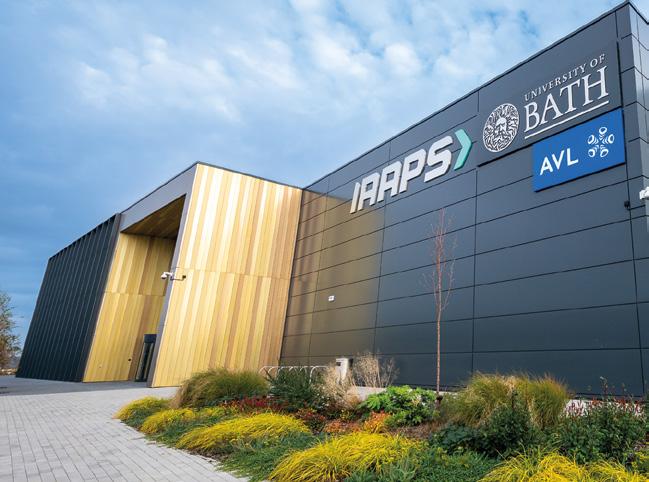
400kW solar array feeding 500kW electrolyser
10kg/h of Green H2
Better than 99.97% purity to meet ISO14687
270kg low pressure H2 storage tank
30bar distribution system to 4 test cells
Closed Loop Cryogenic Helium Gas Cooling System
Digital system, simulation and modelling
Test systems, HiL, PiL and ViL
Up to 750kW, 1200V Battery emulation
Supporting multiple collaborators in pursuit of onsite LH2 storage
We are excited about talking to potential partners to understand their challenges and how we can work together to solve them.
Email iaaps@iaaps.co.uk for more information.
www.iaaps.co.uk
HYDROGEN’S ROLE IN A CIRCULAR ECONOMY
In this episode, we speak to Amna Bezanty from KEW Technology, and Dr Michaela Kendall from Adelan Limited about decarbonising fuel and technology, hydrogen’s role in a circular economy, and the importance of female activity in the hydrogen industry.
To begin with, Michaela, can you explain how important fuel cell technology is in the transition to a clean hydrogen economy?

Michaela: Adelan Limited is a solid oxide fuel cell technology company. If you just think fuel cell technology, that’s what we do and we patent, invent, and manufacture those devices. Those devices will use fuels more efficiently. Per unit fuel or per unit of electricity, we generate power with less fuel and less cost and less carbon.
It is effectively a decarbonising technology; it can use a range of different fuels. Some of the fuels, like LPGA, LNG, ammonia you can buy today, but it is also a future proofed for hydrogen. We test our systems on hydrogen, and we see the future very much as the hydrogen economy.
Hydrogen technologies will have a massive role in both the generation of hydrogen and potentially with other fuels as well. It will effectively replace combustion devices that we use today so that means the devices in cars, devices in homes, industry, marine aviation,
the list goes on. Where you find combustion today, you’ll probably find a fuel cell in future…

QAmna, can you tell me about converting waste and the importance of decarbonising it?

Amna: KEW Technology is all about taking waste and biomass resources and converting them into high value vectors. One of them is hydrogen and one of the biggest challenges that we’re facing in addressing climate change is waste management as well as the use of fossil fuels.
We see a huge opportunity in taking existing resources and converting them to address the problem on the downstream side. Right now, with what is happening to our waste resource, it is either being landfilled or sent to incineration.
Q
PODCAST EPISODE 10
“In the UK, incineration will become unfortunately the most carbon intensive supply into the grid.”
e-magazine 24
We need to look at what we can do to improve that and divert that waste away from incineration and landfill. Instead of getting them incinerated, putting them into chemical feedstocks like methanol and into fuels like hydrogen…

QWhat do you think of hydrogen’s role in a circular economy?
Amna: I think first of all is abide by the waste hierarchy, we’re strong advocates of following that. You start from prevention going into reuse, going to recycling, and then once it has gone through those steps, and it is not possible to recycle that, it would either go to landfill or incinerate.
That is where we come in, we’re the next step before that, where you can take it and convert that same waste in a circular way into a high value product.
Taking that local waste into a local energy plant and converting that waste into hydrogen and supplying that locally as well. Your energy ends up being supplied to fuel your cars, or trains or even HGVs, which is what I see as a very low hanging fruit development opportunity for the use of hydrogen HGVs especially. It is local waste supply and local energy production for local use…
QMore needs to be done to boost women’s participation at all levels in the hydrogen industry, can you share your thoughts on this Michaela?
Michaela: What I’ve been really interested in recently is watching the US and how they are approaching the hydrogen economy. They are doing it from a new perspective. What they are trying to do is finance a fair energy transition, that is inclusive and a whole range of people that are not normally are being included in this conversation.
It is very much about gender equality, but it is also about engaging all stakeholders in the conversation. We know that the stakeholders are our customers, they are the people that are pressurising for these low-carbon products.
We can certainly support women who are trying to get into the industry, or those who maybe have been sidelined a bit…
“Just diversifying the range of views there will change the outcome because if we do business as usual, we’re just going to end up with the same outcome.”
QAmna, what do you think can be done to boost the female activity in the hydrogen industry?
Amna: “It is about ensuring that it is not just reactive or things that women need to do as well. It is also about men taking part in the doing. It shouldn’t have to be the women raising the issues.
Men should be looking at things and more proactively supporting the women, they are the majority right now or the majority in the lead. I think as well as women empowering women, which I’m a huge advocate for and a strong believer of, it is also about the men in leadership positions or in more senior positions empowering women.
We know there are better outcomes from mixed teams. If you look at academic research, it’ is absolutely 100% clear. KPIs are achieved quicker when you have a mixed team, so it really helps everybody in the end…
LISTEN TO THE FULL P DCAST HERE
e-magazine 25
INTERNATIONAL PROJECTS
HYDROGEN PROJECTS FROM AROUND THE WORLD
In this month’s round up of international projects, hydrogen industry leaders delves into the latest updates from the Netherlands, China, Germany, and Italy.
NETHERLAND’S ROLL OUT OF GRANTS STARTING TO TAKE SHAPE

Starting in the Netherlands, a fuel cell firm have secured a grant to develop a new hydrogen fuel cell factory in the Greater Rijnmond region.
Zepp solutions, who specialise in the development, production and integration of fully integrated hydrogen fuel cell systems, will use the €1.98m (approximately £1.7m) grant to build the new factory, which will produce Zepp’s Y50 and X150 fully integrated hydrogen fuel cell modules.
In enabling the company to scale up its production to 1,000 systems annually, it is hoped that the new factory will strengthen their position in the European hydrogen sector.
European countries are coming together to rival the Inflation Reduction Act that arrived from America.
Jonas Brendelberger, co-founder of Zepp solutions, explained that the factory will scale up the production and deployment of its system over the course of the next few years, while enabling the company to accelerate its technology.
“This is an important step towards establishing a new state-of-the-art production facility for our fuel cell systems.
This latest news follows contracts signed in November last year, which will see semi-trucks equipped with zepp’s hydrogen technology deployed on roads later this year.
CHINESE PROJECTS ACHIEVING FINAL INVESTMENT DECISIONS

Moving on, China’s first 10,000-ton photovoltaic green hydrogen pilot project has now been put into production after construction was completed by China Petroleum & Chemical Corporation.
The Sinopec Xinjiang Kuqa Green Hydrogen Pilot Project, which will produce 20,000 tons of green hydrogen per year at full capacity, is the country’s first large-scale utilisation of photovoltaic power generation to produce green hydrogen directly.
Green hydrogen produced at the site will supply Sinopec Tahe Petrochemical, replacing the fossil fuels currently being used to produce hydrogen and enabling a low-carbon development of modern oil processing and green hydrogen coupling.
e-magazine 26
As the first scaled application of green hydrogen refining, the project is projected to reduce CO2 emissions by approximately 485,000 tons a year.
The project also features an electrolysed water hydrogen plant with an annual capacity of 20,000 tons, a spherical hydrogen storage tank with a hydrogen storage capacity of 210,000 standard cubic meters, and hydrogen transmission pipelines with a capacity of 28,000 standard cubic meters per hour.
HOW WILL NEW BUSES BOOST GERMANY’S HYDROGEN EFFORTS?

Thirdly, It has been revealed that Solaris has received a third order for its Solaris hydrogen-powered buses from Regionalverkehr Köln GmbH (RVK).
Deployed in Cologne, Germany, it is expected that the 18 fuel cell vehicles will be operational on RVK’s lines with deliveries aimed for the second half of 2024.
The Urbino 18 hydrogen models are equipped with a 100kW fuel cell set and utilise more than 50 kg of hydrogen gas stored in eight tanks. They have a guaranteed range of 350 km suitable for various weather and terrain conditions.
Also, the new additions will include highefficiency air conditioning with heat pump heating, advanced monitoring, and passenger information systems.
Last month, Solaris announced that it would deliver five Urbino 12 buses to Busreisen Ettenhuber, plus another five to Marin Geldhauser & Co.
It is expected that the buses will be entered into regular service in the Autumn, which will coincide with the completion of hydrogen filling stations currently under construction at each company’s depot.
ITALY LOOKING TO ENHANCE DESALINATION PARTNERSHIPS

Finally, ACWA Power has formalised its partnerships with six Italian companies, including energy firm Eni, to further its efforts into green hydrogen and desalination. The Saudi electric power generation company, a key player in the country’s energy transition, hope the move will lead to greater localization of Italian firms in the Kingdom and establish the foundation for a robust partnership in research and development, according to CEO Marco Arcelli.
He said: “We look forward to bringing together Saudi Arabia, home of one of the largest decarbonization programs in the world, with a rapidly expanding and diversifying economy, and Italy, one of the most competitive engineering, manufacturing, and technology suppliers globally.
Through the agreement, ACWA Power and Confindustria will evaluate the potential for green hydrogen and water desalination projects.
ACWA Power have also partnered with A2A, through which they will assess the potential for green hydrogen projects in areas of mutual interest, and RINA, with whom the possibility of utilising green hydrogen and its derivatives in shipping will be investigated.
e-magazine 27
Italy and Germany keep setting new benchmarks for the rest of the EU to follow.
Building the Hydrogen Economy
Radisson BLU, Glasgow
28 November 2023
Continuing our annual Scottish Conference, join key decisionmakers and thought leaders throughout the sector as we look to grow the hydrogen economy and enhance the energy transition through production, storage, distribution, and end-use.
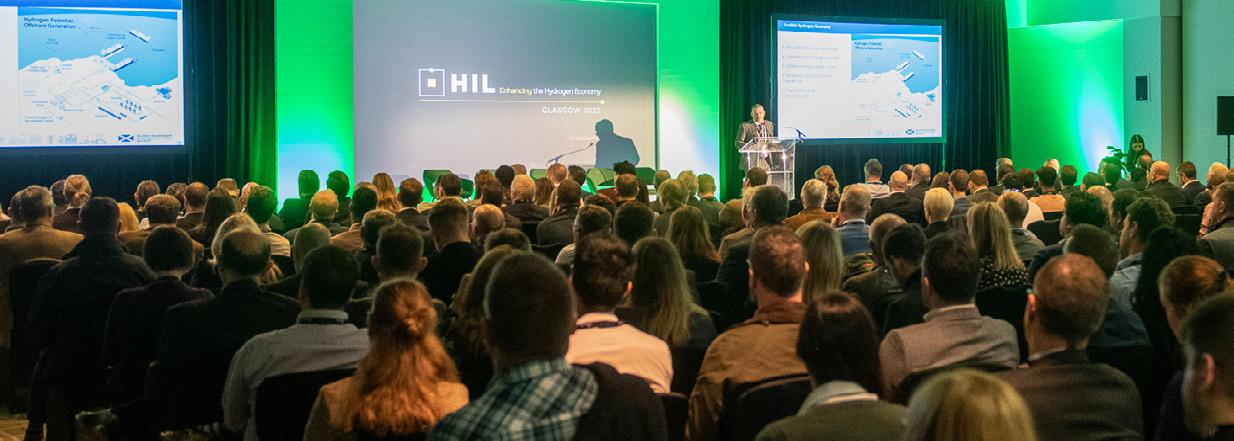
• What role will transport play in hydrogen storage, distribution, and end-use?
• How is Scotland uniquely positioned to explore onshore and offshore renewable options?
• How to unlock further investment opportunities for Scotland
• Explore how oil and gas companies can transition to green solutions
hydrogenindustryleaders.com
GLASGOW 20 2 3
#H2Leaders
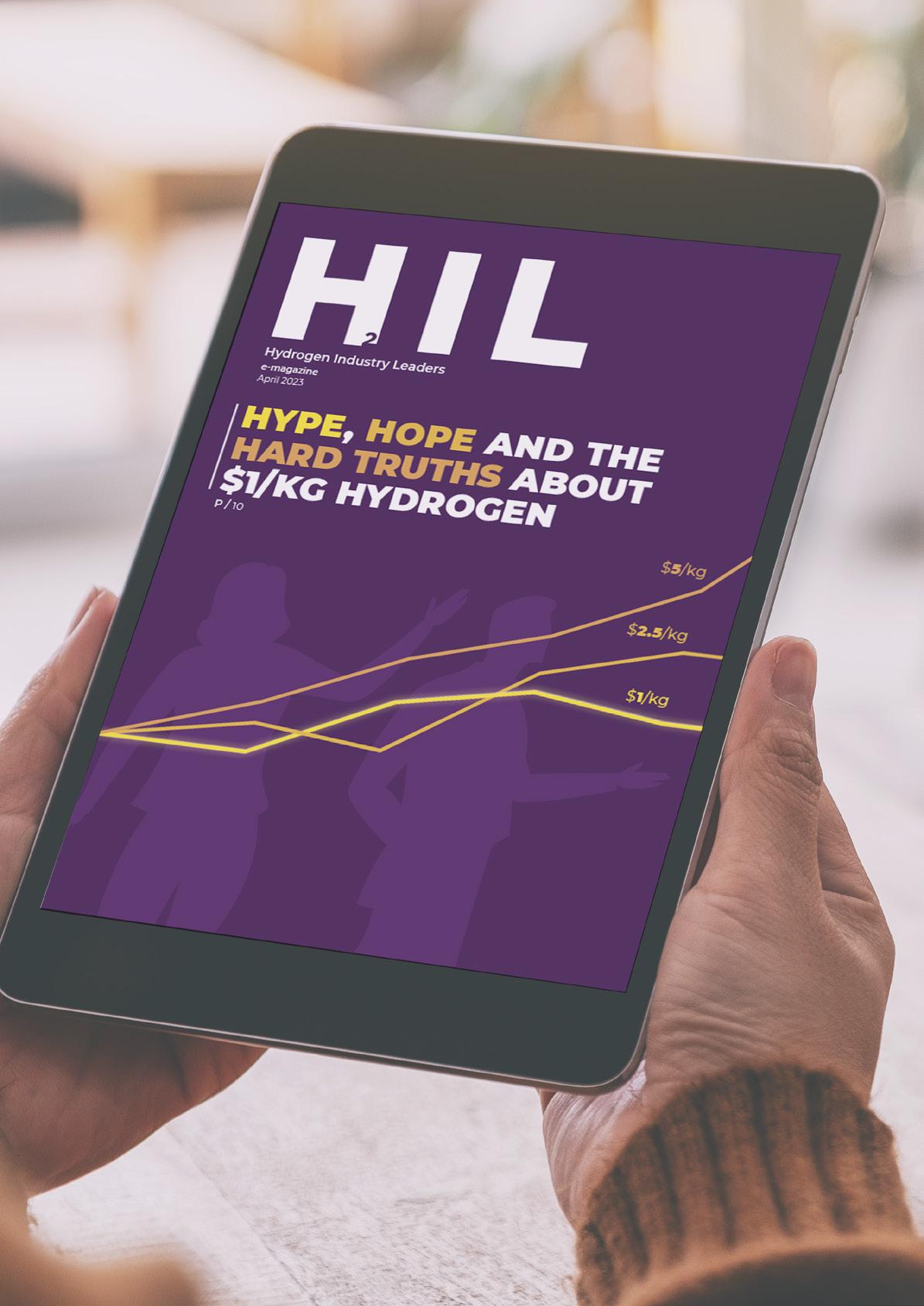
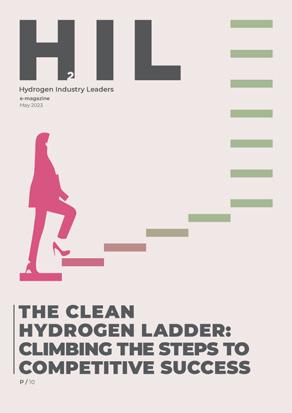

Hydrogen Industry Leaders e-magazine July 2023 EEX LAUNCH WORLD FIRST GREEN HYDROGEN INDEX P 10 € | MWh Hydrogen Industry Leaders e-magazine April 2023 HYPE , HOPE AND THE HARD TRUTHS ABOUT $1/KG HYDROGEN P / 10 $1/kg $2.5/kg $5/kg COULD THE UK LEAD THE WAY FOR PINK HYDROGEN PRODUCTION? Hydrogen Industry Leaders e-magazine September 2023 Hydrogen Industry Leaders e-magazine August 2023 WHICH COST DRIVERS SHOULD THE SECTOR USE TO CALCULATE LCOH? P / 16 Hydrogen Industry Leaders e-magazine P 10 June 2023 BUILDING THE HYDROGEN ECONOMY ACROSS THE NORTH EAST READ BACK ISSUES SUBSCRIBE TODAY ACCELERATE
e-magazine 29
YOUR INDUSTRY KNOWLEDGE

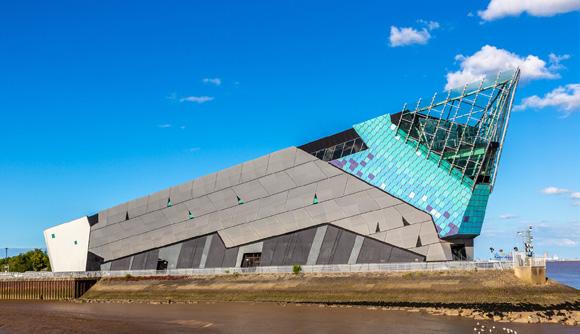

Hydrogen Industry Leaders 2 100 Breakfast Hub Hull hydrogenindustryleaders.com #H2Leaders Our HIL 100 Breakfast Hub brings us to Hull to discuss current and forthcoming projects across the East of England and Humberside. Join us for this informal networking breakfast to engage with key people driving the hydrogen revolution in the region. 01 Dec 2023 7:30 AM - 11:00 AM Holiday Inn Hull Marina

























 BY HANNAH WINTLE
BY HANNAH WINTLE







 BY HANNAH WINTLE
BY HANNAH WINTLE


















